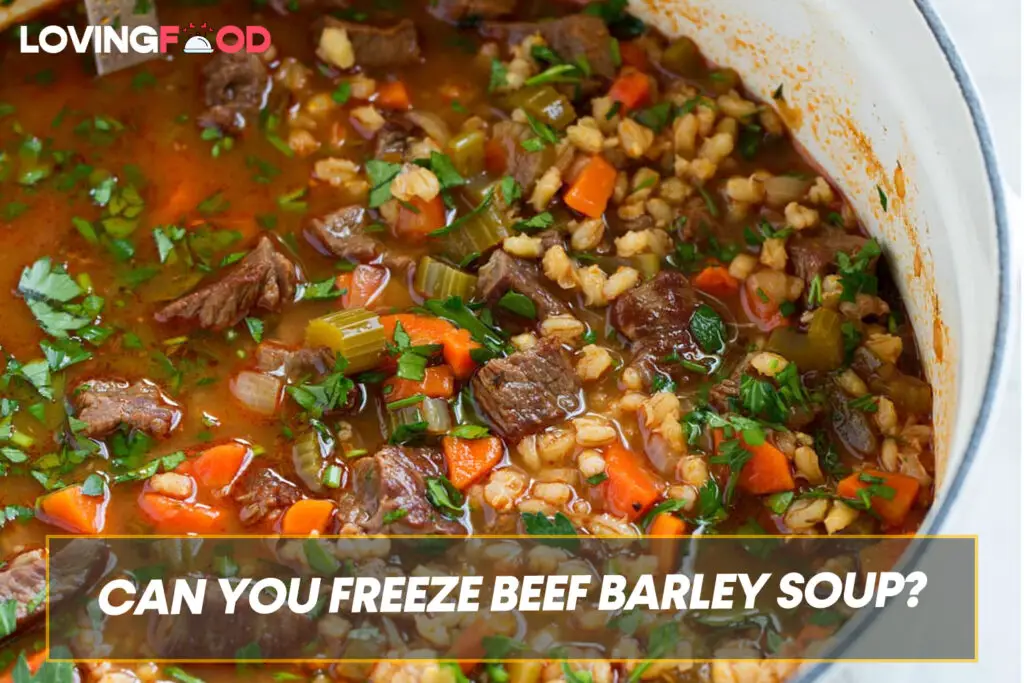It is common to see your soup bubble over with foam, regardless of the kind, but what could be responsible for this? Some individuals attribute soup foaming to a variety of factors, including the ingredients used, if the soup has gone bad, or whether a certain preservation method was used.
Your soup foams for two reasons: when the protein and fat content interact with the high-water temperature, causing an increase in surface tension, which causes bubbles and foam to form. Another reason your soup is foamy is that it may have gone bad.
All of your concerns regarding why your soup may be foaming have been addressed. Guidelines on what to do when this occurs and tips you need to know for your next soup preparation have been offered.
NEW: Can You Freeze Split Pea Soup?
What Causes Soup to Foam?
Soup foams for several reasons. When the protein or fat content in your soup reacts to the high-water temperature, it foams. This causes an increase in surface tension, which causes small air pockets to form. Your soup becomes foamy and occasionally bubbles over when cooked in a large batch.
This is a regular occurrence in stocks and broths. When protein starts to congeal, it forms foams that rise to the surface and, in most cases, spillover. Because the foam or bubbles are flavorless and odorless, they do not affect your soup.

For soups with high-fat content, the fat solidifies in the soup whilst bubbling. By skimming the foamy fat, you can reduce the fat content in the meal. Oftentimes, this reaction cannot be prevented, especially in soups with high fat and protein content.
Another reason your soup might have foam is that it may have gone bad. An indicator that your soup has spoiled is that there may be foam on the surface of your soup before reheating it. However, this is not a major indicator that your soup has spoiled.
There are other factors to consider to confirm if your soup has gone bad.
What to do When Your Soup Foams
The foam present in soups is not harmful, but if you want to skim them or reduce the foam, follow these guidelines:
- Remove the lid from the pot. Your soup will foam less quickly as a result of this.
- Reduce the heat. Allow the soup to simmer for a few minutes.
- In a circular motion, swirl a long ladle. This causes the foam to collect near the pot’s edge, making it easier to remove with a spoon.
- If the soup has bubbling fat, use a mesh skimming spoon to scoop it out.
- Place ice cubes on a cold metal spoon then glide the back of the spoon on your soup’s surface. The fat would coagulate and stick to the back of the spoon. This procedure, however, takes longer than others.
- Using a gravy separator or a skimming pitcher, strain the broth.

How to Know When Your Soup Has Gone Bad
Some people believe that foamy soups are usually spoiled. Although this is true to some extent, not all foamy soups are spoiled.
This is why we have offered tips on how to identify spoiled soup. The indicators of spoilt soup are:
- An unpleasant smell is one of the earliest indicators of spoiled soup.
- A change in the color and appearance of your soup. Spoiled soups usually have a dull color. Sometimes, the soup changes to a different color. Molds are also a sign that your soup has spoiled.
- A change in the texture of your soup is also a sign your soup has gone bad. If your soup is slimy, it can become solid or the other way around.
Tips For Your Soup Recipe That You Wish You Knew
- Start with your base flavor, which is usually onion, garlic, and sometimes ginger.
- If you need to sauté your vegetables, add the vegetables to your saucepan according to the time each will take to cook, not adding them all at once.
- Never allow your vegetables to become soggy. Lightly stir-fry the vegetables to preserve the nutrients.
- To thicken your soup, combine butter with plain flour and stir until paste forms over low heat. Pour in the soup and stir to combine.
- To thicken your soup, add pureed potatoes.
- If your soup tastes bland, don’t add raw salt except when it is being prepared. Consumption of raw salt causes heart problems.
- Stir your soup continuously to prevent it from burning.
Final Note
You should not be concerned if your soup foams while cooking because a chemical reaction is taking place.
If you find foam in your soup after it has been cooked or reheated for a long time, search for other clues that your soup has spoiled.








